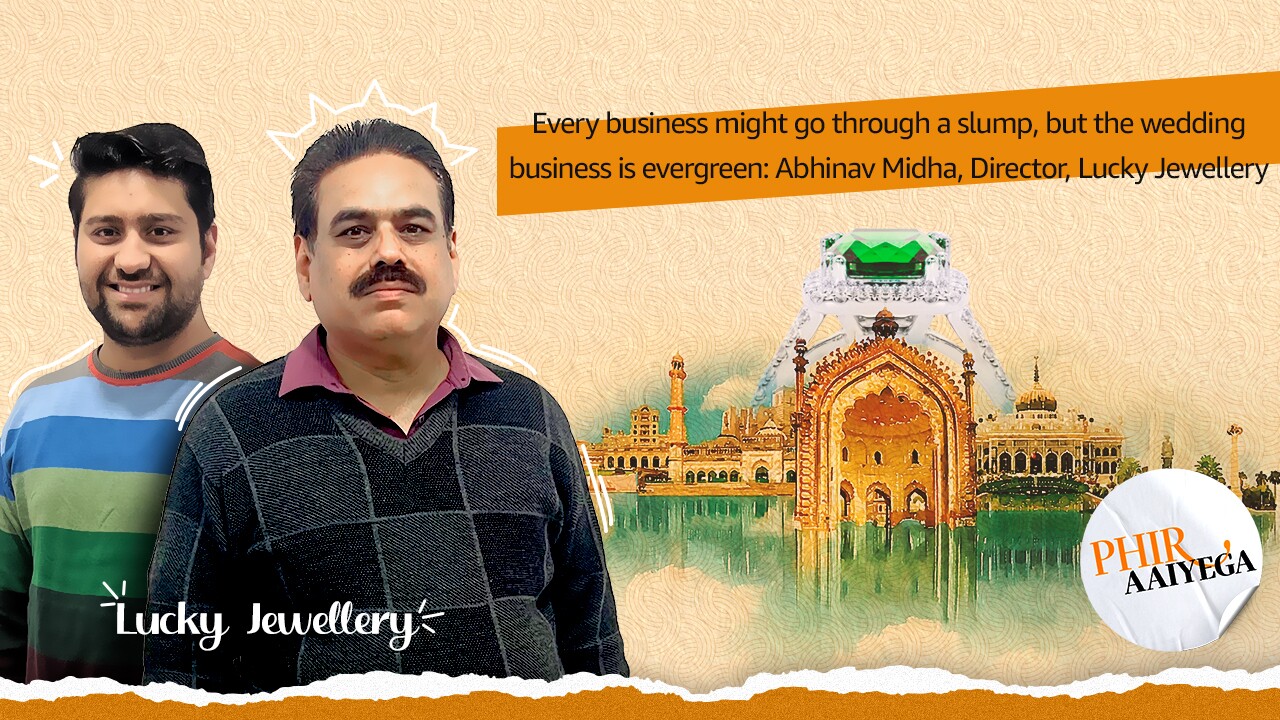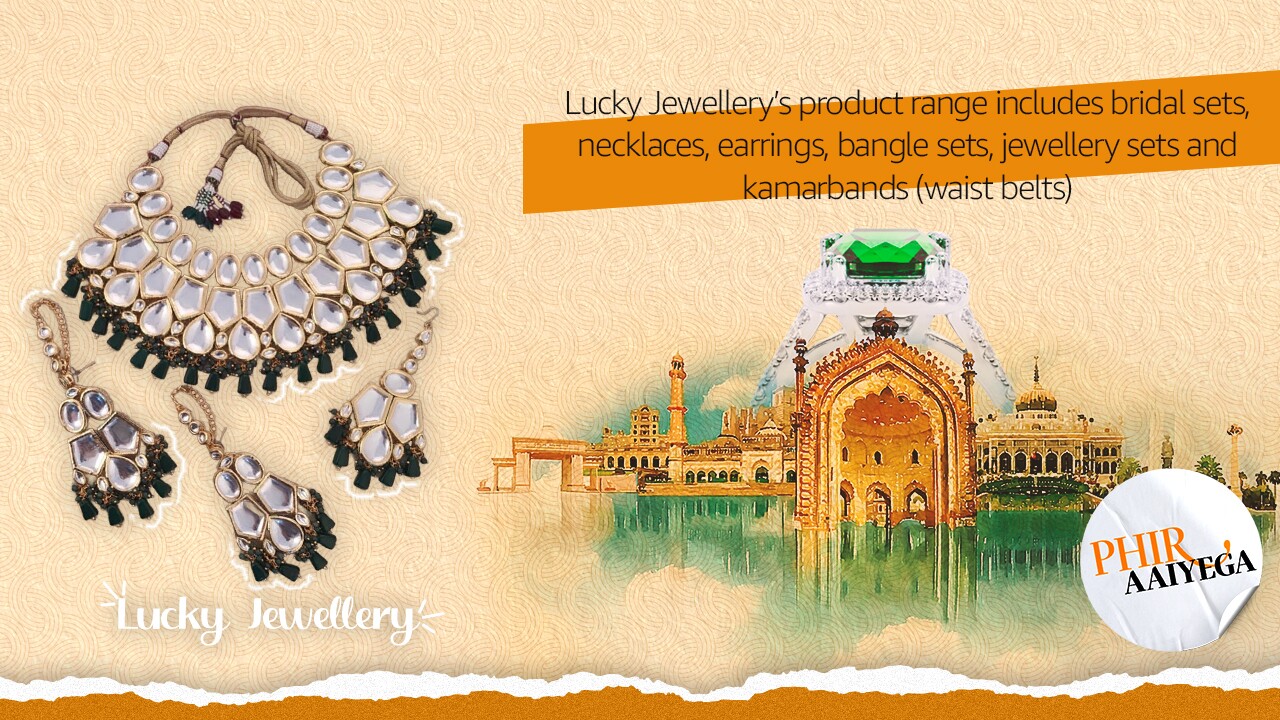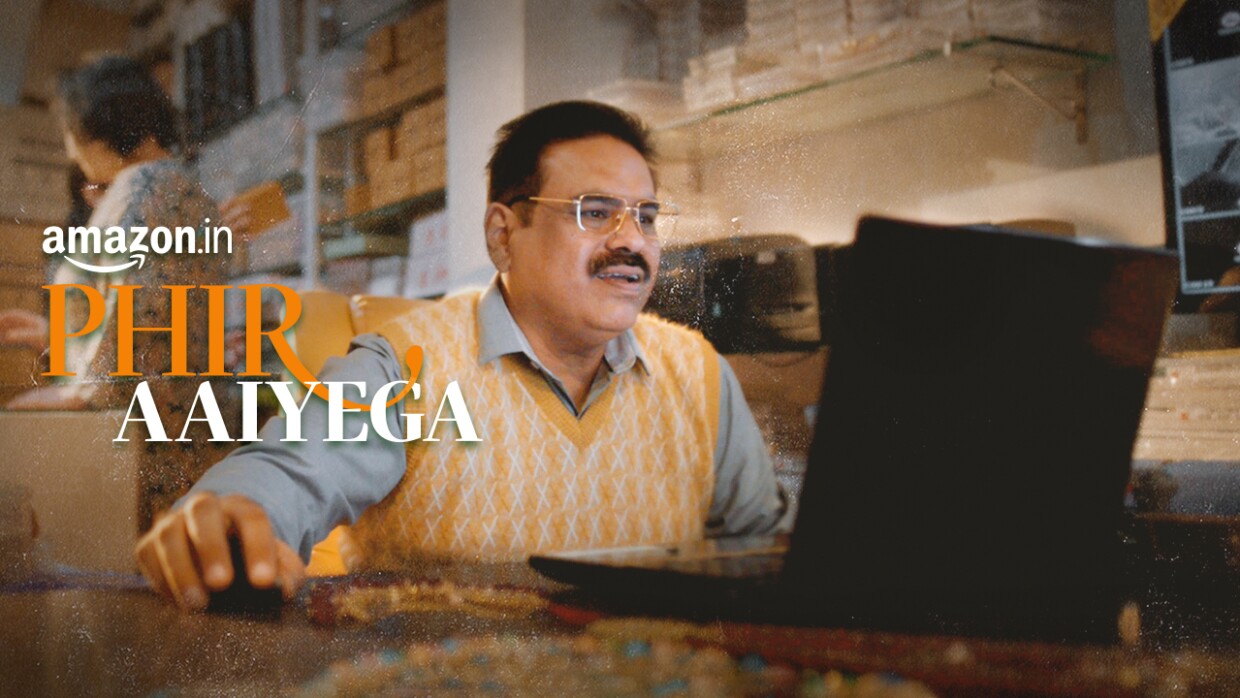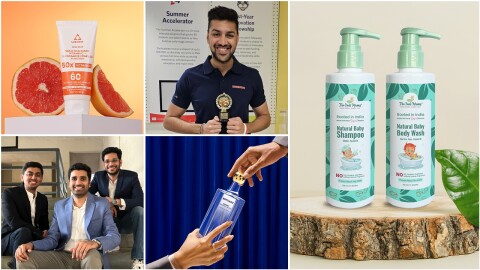Bhushan Lal Midha’s family has been in the imitation jewellery business for four generations now. It all began during partition in 1947 when Bhushan’s enterprising grandfather came to India from Pakistan and started selling artificial jewellery near temples and railway stations, besides village fairs. Soon enough, the moniker ‘Chamatkari Baba’ followed the senior Midha as many started believing that his artificial jewellery was bringing them good luck. When the patriarch set up his jewellery store four years later in Lucknow, little did he know that one day his family would sell bridal sets, necklaces, earrings, bangle sets, jewellery sets and kamarbands (waist belts) to customers across India and beyond. Lucky Jewellery, which began life as ‘Kaliyugi Sone ki Dukan’ (since they deal with artificial jewellery), is today a fully online business.
Trust across generations
In the last seven decades, Lucky Jewellery has weathered several transitions and business cycles. But the founding family’s deep knowledge of the beads business, coupled with their commitment to quality have held it in good stead. Bhushan, promoter of Lucky Jewellers says, "If we make 100 jewellery sets, all of them perfectly fit our customers - that's how confident we are about our designs," Bhushan said.
Lucky Jewellery also benefits from having a diverse customer base serviced by workers who’ve been with them across generations. “We have several instances where the father used to work for us, followed by the son, and now even the grandson is employed with us and beading with the same finesse,” Abhinav Midha, Bhushan’s son and director at Lucky Jewellery, says.

Weddings - an evergreen business
Wedding jewellery is the big focus area for Lucky Jewellery. That’s because weddings are an everlasting festival in India. “Holi comes and goes, Diwali comes and goes, but whenever the wedding season comes, everything goes into overdrive. Every business might go through a slump, but the wedding business is evergreen,” Abhinav said. Remember, the value of domestic spend on jewellery is said to be over $50 billion, making Indians the biggest spenders on jewellery globally.
Building online presence with Amazon
Back in 2012, Abhinav, who has a background in engineering, decided to launch a website for the family business. It was more about latching on to the online bandwagon rather than a well-thought out customer acquisition channel. In 2014, the business started selling on Amazon.in through the Amazon Seller Central program. Greater visibility followed in 2020 through the Local Shops on Amazon program, which offers offline retailers and neighbourhood stores a tremendous opportunity to scale their business. Sellers are also equipped with digital presence for their physical stores.
“Earlier, we were competing in the local market. But from the day we went on Amazon.in we were able to cross boundaries, securing orders from South India, Jammu & Kashmir, North-East and even Myanmar,” said Abhinav. Lucky Jewellery started leveraging India Post’s services to deliver orders in regions where private courier delivery wasn’t available.
Amazon helped us go on a different tangent altogether and that helped our business
Today, Lucky Jewellery operates primarily online. The idea is to focus and double down on a channel which is yielding maximum results. They not only sell in India but also have clientele across the US, Dubai, Malaysia, and many more countries. Their offline store in Lucknow has been shut for the past 5-6 years but the orders keep pouring in.
Amazon Great Indian Festival: Where innovation meets scale
Abhinav and team got an early taste of the size and scale of selling on Amazon.in during their first Amazon Great Indian Festival, India’s largest festive selling event, three years ago.
“I remember the unusual surge of orders—every time I refreshed the app, the orders doubled. It almost felt unreal, like a technical glitch, but these were actual orders,” says Abhinav. Their inventory sold out. “We were short of Polyethylene wax and people for packaging,” said Abhinav.

Customer love followed. “I was surprised to see people promoting our business on social media platforms, that too for free,” Abhinav says.
Learning from customer feedback
But not all reviews are positive. Critical customer feedback is a gift especially for firms that are young in their online selling journey. Abhinav recalls how some customers complained about skin irritation after putting on particular designs of jewellery. The team went back to the drawing board, got lab tests done for their products, and figured out the need to stop using a particular alloy in their jewellery. “We started using a refined material that was skin-friendly and liked by our customers,” he says. Customer sentiment improved manifold. All Amazon.in customers of Lucky Jewellery get a quality assurance certificate and a 30-day return policy, which is crucial in building trust.
The ‘Miya-Biwi’ collection
Lucky Jewellery’s business strategy is to tap into product categories with few sellers. It wants to stay away from mass market categories—hair accessories, for instance—where there is lot of competition. In the works is a one-stop solution for men and women called the 'Miya-Biwi' collection, which will include cufflinks, kalgis, brooches, bangles, and bracelets.
“The idea is to provide all wedding and wedding-related accessories in one place,” says Abhinav.











